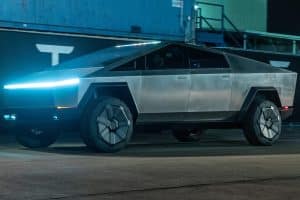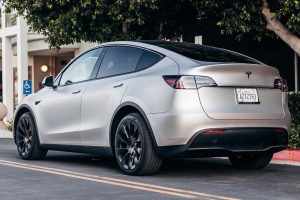- 🇨🇳 Tesla has launched subscriptions for Enhanced Autopilot (EAP) in China, with options of 699 yuan (~$98) per month or 1,399 yuan (~$197) for three months.
- 🚗 EAP in China offers features like auto-steering, auto lane change, and navigate on Autopilot, with expectations of adding smart summons and automatic parking options.
- 🔜 The launch of EAP subscriptions in China is seen as a potential precursor to Tesla launching its Full Self-Driving (FSD) software in the country.
- 💬 During Tesla’s Q1 2024 earnings call, CEO Elon Musk highlighted plans to eventually release FSD in other markets like China, with regulatory approvals.
- 🌐 Musk stated that FSD’s neural net-based autonomy system can work well in different markets, similar to how humans can drive in foreign countries.
- ⚠️ Tesla’s CFO, Vaibhav Taneja, mentioned that some adjustments may be needed to comply with specific road rules in China, but no major changes to the system are anticipated.
The race towards autonomous driving has been a global phenomenon, with companies vying to be at the forefront of this revolutionary technology. Tesla, the electric vehicle giant, has been a trailblazer in this field, and its recent move to launch subscriptions for Enhanced Autopilot (EAP) in China signals a significant step towards bringing its cutting-edge autonomous driving capabilities to the world’s largest automotive market.
Enhanced Autopilot: The Gateway to Autonomous Driving
Tesla’s EAP system is a crucial stepping stone towards achieving full self-driving (FSD) capabilities. In China, the company has introduced two subscription options for EAP: 699 yuan (approximately $98) per month or 1,399 yuan (approximately $197) for a three-month package. This move not only provides Chinese customers with greater flexibility in accessing advanced driver-assistance features but also sets the stage for the eventual rollout of Tesla’s FSD system in the country.
The EAP system in China offers a range of impressive features, including auto-steering, auto lane change, and navigate on Autopilot. Additionally, Tesla has hinted at the possibility of introducing smart summons and automatic parking options, further enhancing the user experience and paving the way for truly autonomous driving.
Elon Musk’s Vision: Bringing FSD to the Global Stage
During Tesla’s Q1 2024 earnings call, CEO Elon Musk emphasized the company’s plans to eventually release its FSD system in other markets, including China, subject to regulatory approvals. Musk’s confidence in the neural net-based autonomy system is evident, as he believes it can perform well across different markets, much like how humans can adapt to driving in foreign countries.
The key advantage of Tesla’s approach lies in its reliance on end-to-end neural networks, which allow the system to learn and adapt to various driving environments without requiring significant modifications. This scalability is a game-changer, as it enables Tesla to bring its autonomous driving technology to new markets more efficiently.
Navigating Regulatory Hurdles
While Tesla’s ambitions are grand, the company acknowledges the need to navigate regulatory hurdles in different markets. During the earnings call, Chief Financial Officer Vaibhav Taneja highlighted the potential adjustments required to comply with specific road rules in China, such as restrictions on crossing solid lines during lane changes.
However, Taneja reassured investors that these adjustments are relatively minor and do not necessitate a complete overhaul of the underlying system. This confidence stems from the flexibility of Tesla’s neural net-based approach, which can adapt to local driving conditions and regulations with targeted training and fine-tuning.
The Road Ahead: Balancing Innovation and Safety
As Tesla inches closer to bringing its FSD system to China, the company faces the challenge of striking a delicate balance between innovation and safety. While the potential benefits of autonomous driving are immense, ranging from increased road safety to improved efficiency and accessibility, ensuring the technology’s reliability and robustness remains paramount.
Tesla’s approach of gradually introducing advanced driver-assistance features through EAP subscriptions allows for a controlled rollout and enables the company to gather valuable data and feedback from real-world driving scenarios. This iterative process not only enhances the system’s performance but also instills confidence in consumers and regulatory bodies alike.





